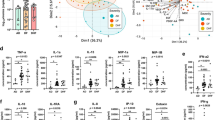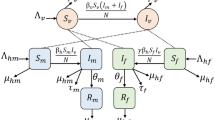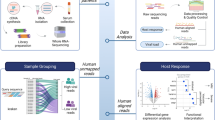Abstract
Dengue fever and dengue hemorrhagic fever are mosquito-borne viral diseases. Dendritic cell–specific ICAM-3 grabbing nonintegrin (DC-SIGN1, encoded by CD209), an attachment receptor of dengue virus, is essential for productive infection of dendritic cells1,2. Here, we report strong association between a promoter variant of CD209, DCSIGN1-336, and risk of dengue fever compared with dengue hemorrhagic fever or population controls. The G allele of the variant DCSIGN1-336 was associated with strong protection against dengue fever in three independent cohorts from Thailand, with a carrier frequency of 4.7% in individuals with dengue fever compared with 22.4% in individuals with dengue hemorrhagic fever (odds ratio for risk of dengue hemorrhagic fever versus dengue fever: 5.84, P = 1.4 × 10−7) and 19.5% in controls (odds ratio for protection: 4.90, P = 2 × 10−6). This variant affects an Sp1-like binding site and transcriptional activity in vitro. These results indicate that CD209 has a crucial role in dengue pathogenesis, which discriminates between severe dengue fever and dengue hemorrhagic fever. This may have consequences for therapeutic and preventive strategies.
This is a preview of subscription content, access via your institution
Access options
Subscribe to this journal
Receive 12 print issues and online access
$259.00 per year
only $21.58 per issue
Buy this article
- Purchase on SpringerLink
- Instant access to full article PDF
Prices may be subject to local taxes which are calculated during checkout


Similar content being viewed by others
References
Tassaneetrithep, B. et al. DC-SIGN (CD209) mediates dengue virus infection of human dendritic cells. J. Exp. Med. 197, 823–829 (2003).
Navarro-Sanchez, E. et al. Dendritic-cell-specific ICAM3-grabbing non-integrin is essential for the productive infection of human dendritic cells by mosquito-cell-derived dengue viruses. EMBO Rep. 4, 1–6 (2003).
World Health Organization. Dengue Haemorrhagic Fever: Diagnosis, Treatment, Prevention and Control (World Health Organization, Geneva, 1997).
Burke, D.S., Nisalak, A., Johnson, D.E. & Scott, R.M. A prospective study of dengue infections in Bangkok. Am. J. Trop. Med. Hyg. 38, 172–180 (1988).
Halstead, S.B. Pathogenesis of dengue: challenges to molecular biology. Science 239, 476–481 (1988).
Liu, W. et al. Characterization of a novel C-type lectin-like gene, LSECtin: demonstration of carbohydrate binding and expression in sinusoidal endothelial cells of liver and lymph node. J. Biol. Chem. 279, 18748–18758 (2004).
Liu, H., Yu, W., Liou, L.Y. & Rice, A.P. Isolation and characterization of the human DC-SIGN and DC-SIGNR promoters. Gene 313, 149–159 (2003).
Grant, S.F. et al. Reduced bone density and osteoporosis associated with a polymorphic Sp1 binding site in the collagen type I alpha 1 gene. Nat. Genet. 14, 203–205 (1996).
Mann, V. et al. A COL1A1 Sp1 binding site polymorphism predisposes to osteoporotic fracture by affecting bone density and quality. J. Clin. Invest. 107, 899–907 (2001).
Harendza, S. et al. Linked common polymorphisms in the gelatinase a promoter are associated with diminished transcriptional response to estrogen and genetic fitness. J. Biol. Chem. 278, 20490–20499 (2003).
Sibley, K. et al. Functional FAS promoter polymorphisms are associated with increased risk of acute myeloid leukemia. Cancer Res. 63, 4327–4330 (2003).
Rothman, A.L. Immunology and immunopathogenesis of dengue disease. Adv. Virus Res. 60, 397–419 (2003).
Mongkolsapaya, J. et al. Original antigenic sin and apoptosis in the pathogenesis of dengue hemorrhagic fever. Nat. Med. 9, 921–927 (2003).
Vaughn, D.W. et al. Dengue viremia titer, antibody response pattern, and virus serotype correlate with disease severity. J. Infect. Dis. 181, 2–9 (2000).
Loke, H. et al. Strong HLA class I–restricted T cell responses in dengue hemorrhagic fever: a double-edged sword? J. Infect. Dis. 184, 1369–1373 (2001).
Chiewsilp, P., Scott, R.M. & Bhamarapravati, N. Histocompatibility antigens and dengue hemorrhagic fever. Am. J. Trop. Med. Hyg. 30, 1100–1105 (1981).
Paradoa Perez, M.L., Trujillo, Y. & Basanta, P. Association of dengue hemorrhagic fever with the HLA system. Haematologia (Budap.) 20, 83–87 (1987).
Stephens, H.A. et al. HLA-A and -B allele associations with secondary dengue virus infections correlate with disease severity and the infecting viral serotype in ethnic Thais. Tissue Antigens 60, 309–318 (2002).
Loke, H. et al. Susceptibility to dengue hemorrhagic fever in vietnam: evidence of an association with variation in the vitamin d receptor and Fc gamma receptor IIa genes. Am. J. Trop. Med. Hyg. 67, 102–106 (2002).
Fernandez-Mestre, M.T., Gendzekhadze, K., Rivas-Vetencourt, P. & Layrisse, Z. TNF-alpha-308A allele, a possible severity risk factor of hemorrhagic manifestation in dengue fever patients. Tissue Antigens 64, 469–472 (2004).
Klimstra, W.B., Nangle, E.M., Smith, M.S., Yurochko, A.D. & Ryman, K.D. DC-SIGN and L-SIGN can act as attachment receptors for alphaviruses and distinguish between mosquito cell- and mammalian cell-derived viruses. J. Virol. 77, 12022–12032 (2003).
van Kooyk, Y., Appelmelk, B. & Geijtenbeek, T.B. A fatal attraction: Mycobacterium tuberculosis and HIV-1 target DC-SIGN to escape immune surveillance. Trends Mol. Med. 9, 153–159 (2003).
Halary, F. et al. Human cytomegalovirus binding to DC-SIGN is required for dendritic cell infection and target cell trans-infection. Immunity 17, 653–664 (2002).
Tailleux, L. et al. DC-SIGN is the major Mycobacterium tuberculosis receptor on human dendritic cells. J. Exp. Med. 197, 121–127 (2003).
Yang, Z.Y. et al. pH-dependent entry of severe acute respiratory syndrome coronavirus is mediated by the spike glycoprotein and enhanced by dendritic cell transfer through DC-SIGN. J. Virol. 78, 5642–5650 (2004).
Martin, M.P. et al. Association of DC-SIGN promoter polymorphism with increased risk for parenteral, but not mucosal, acquisition of human immunodeficiency virus type 1 infection. J. Virol. 78, 14053–14056 (2004).
Innis, B.L. et al. An enzyme-linked immunosorbent assay to characterize dengue infections where dengue and Japanese encephalitis co-circulate. Am. J. Trop. Med. Hyg. 40, 418–427 (1989).
Takahashi, M., Matsuda, F., Margetic, N. & Lathrop, M. Automated identification of single nucleotide polymorphisms from sequencing data. J. Bioinform. Comput. Biol. 1, 253–265 (2003).
Mummidi, S. et al. Extensive repertoire of membrane-bound and soluble dendritic cell-specific ICAM-3-grabbing nonintegrin 1 (DC-SIGN1) and DC-SIGN2 isoforms. Inter-individual variation in expression of DC-SIGN transcripts. J. Biol. Chem. 276, 33196–33212 (2001).
Abecasis, G.R. & Cookson, W.O. GOLD-graphical overview of linkage disequilibrium. Bioinformatics 16, 182–183 (2000).
Acknowledgements
We thank A. Chunharas, P. Kitpoka and A. Chairunsri for help in recruiting affected individuals and controls and L. Damrikarnlerd and S. Swasdiworn for managing the clinical database. This work was supported by the Senior Research Scholarship Program of the Thailand Research Fund (P.M.), the Thailand Tropical Disease Research Program T2 (P.M.), the Thailand National Center for Genetic Engineering and Biotechnology (P.M., P.Y. and N.T.), Mahidol University (A.S.), the Thailand SNP Discovery Program (T.L.), the Direction Générale pour l'Armement (P.D.), the Medical Scholar Program, Mahidol University and the Split Mode PhD program (S.M.K.), and the Royal Golden Jubilee Program, the Thailand Research Fund and the French Embassy of Thailand (C.T.).
Author information
Authors and Affiliations
Corresponding author
Ethics declarations
Competing interests
The authors declare no competing financial interests.
Supplementary information
Supplementary Fig. 1
Linkage disequilibrium between SNPs in CD209 and flanking genes CLEC4M (CD209L) and CLEC4G (LSECtin). (PDF 385 kb)
Supplementary Table 1
Populations studied. (PDF 53 kb)
Supplementary Table 2
Description of CD209 polymorphisms. (PDF 98 kb)
Supplementary Table 3
Haplotypes constructed from the five SNPs in LD with DCSIGN1-336 and their frequencies. (PDF 46 kb)
Supplementary Table 4
Description of CLEC4G (LSECtin) and CLEC4M (CD209L) polymorphisms. (PDF 90 kb)
Supplementary Table 5
Sequencing primers for CD209, CLEC4M (CD209L) and CLEC4G (LSECtin). (PDF 80 kb)
Supplementary Table 6
PCR-RFLP genotyping and PCR gel electrophoresis assays. (PDF 49 kb)
Supplementary Table 7
TaqMan genotyping assays. (PDF 31 kb)
Rights and permissions
About this article
Cite this article
Sakuntabhai, A., Turbpaiboon, C., Casadémont, I. et al. A variant in the CD209 promoter is associated with severity of dengue disease. Nat Genet 37, 507–513 (2005). https://doi.org/10.1038/ng1550
Received:
Accepted:
Published:
Issue date:
DOI: https://doi.org/10.1038/ng1550
This article is cited by
-
Association of CD209 promoter variants and tuberculosis infection susceptibility, AIDS development, and treatment response outcomes among the HIV-1 Moroccan population
The Nucleus (2023)
-
Engineered pegRNAs improve prime editing efficiency
Nature Biotechnology (2022)
-
Genetic polymorphisms in TLR3, IL10 and CD209 influence the risk of BK polyomavirus infection after kidney transplantation
Scientific Reports (2022)
-
The continued threat of emerging flaviviruses
Nature Microbiology (2020)
-
The effect of KIR and HLA polymorphisms on dengue infection and disease severity in northeastern Thais
Medical Microbiology and Immunology (2020)



